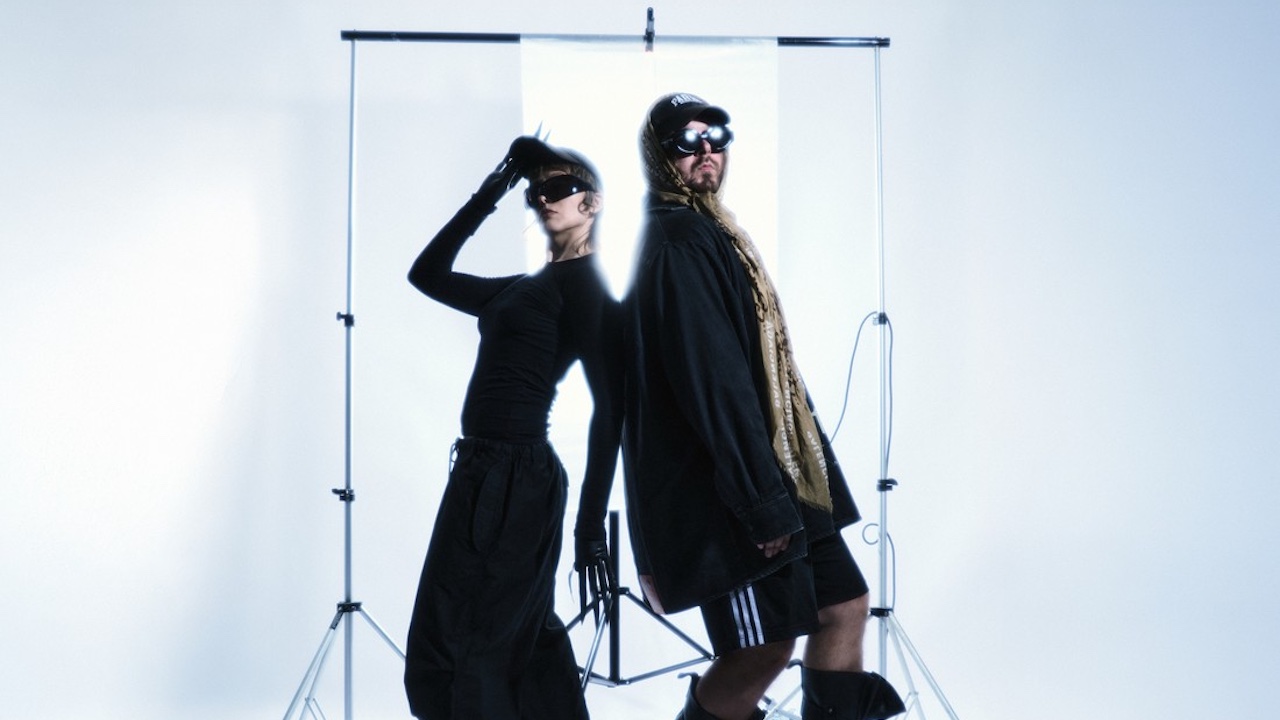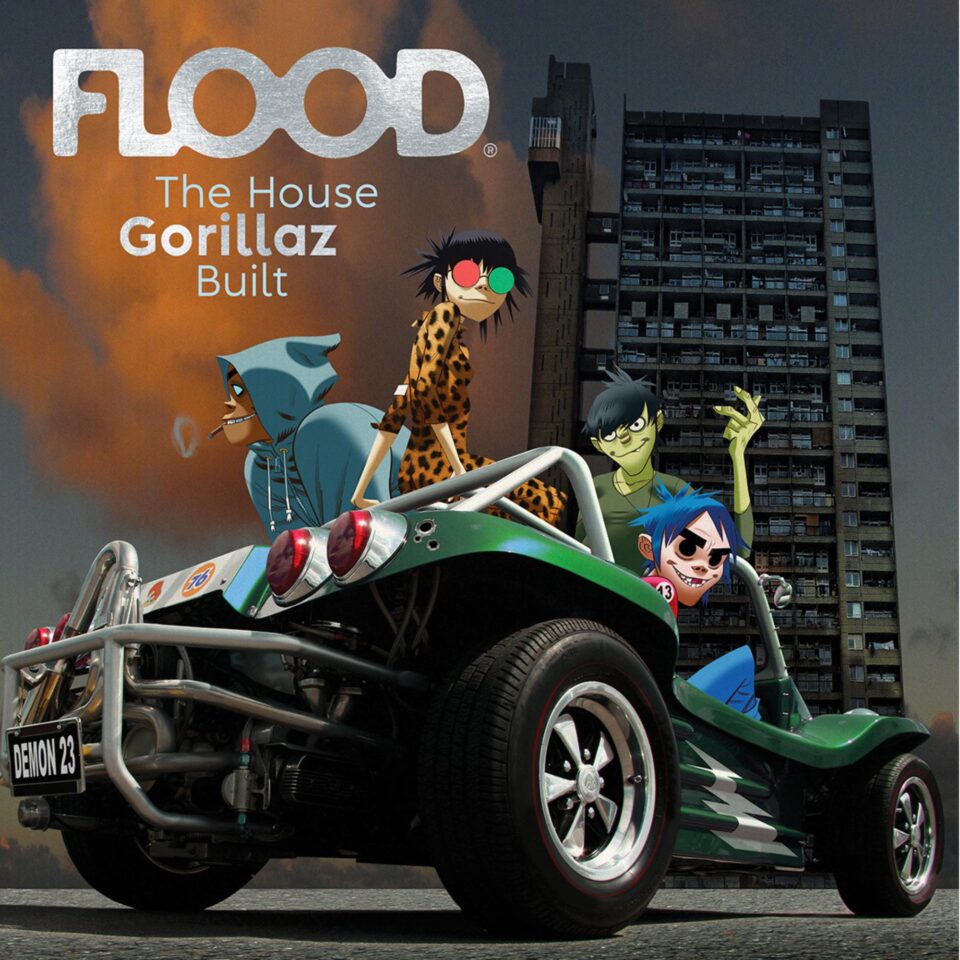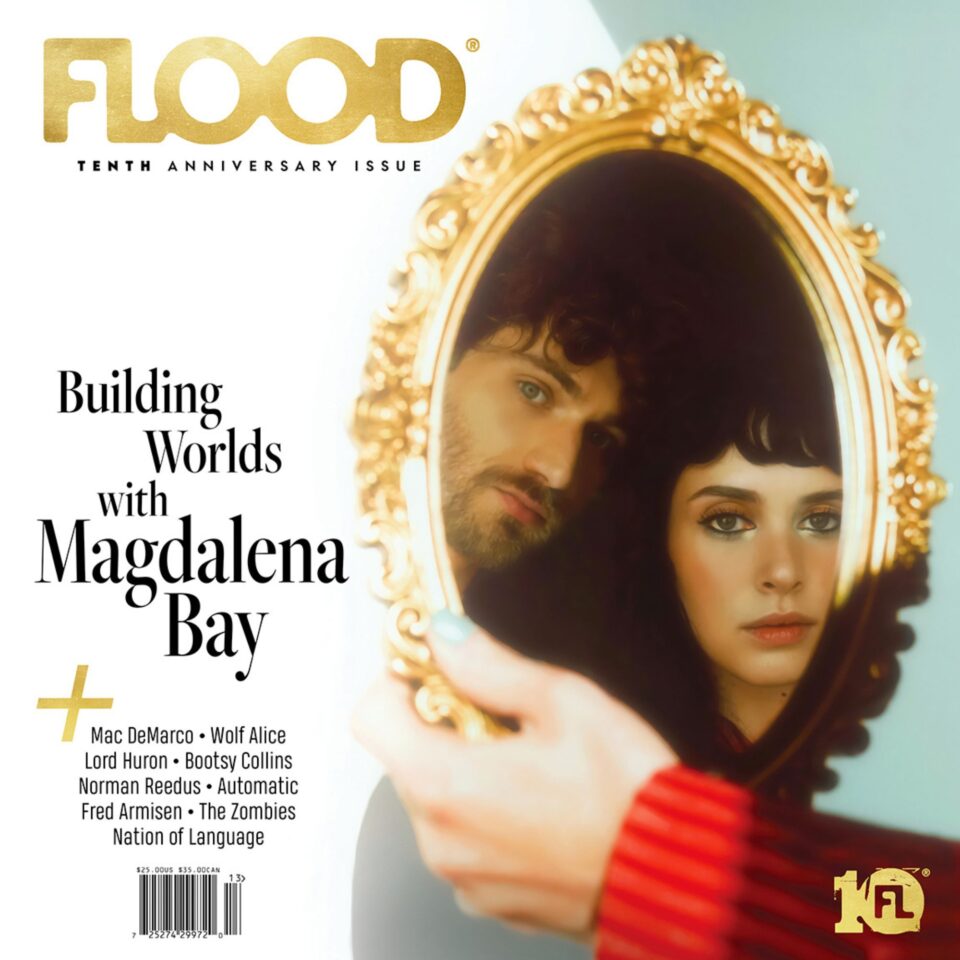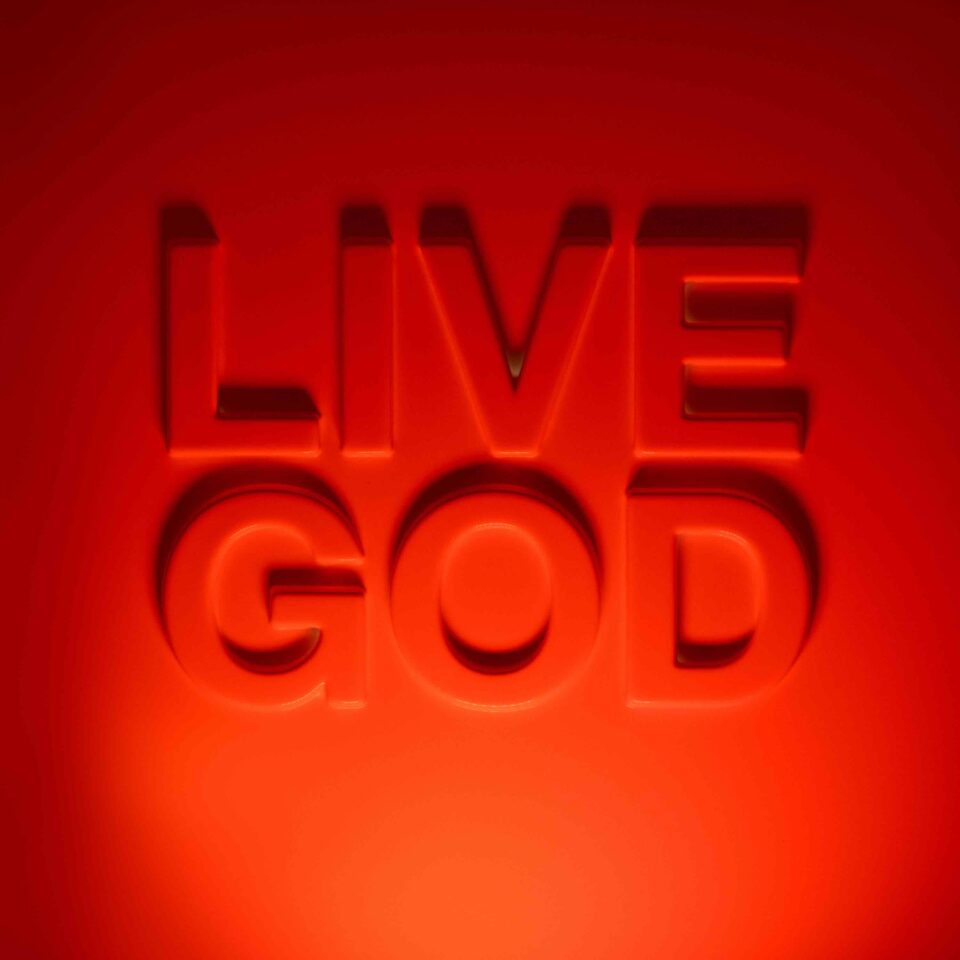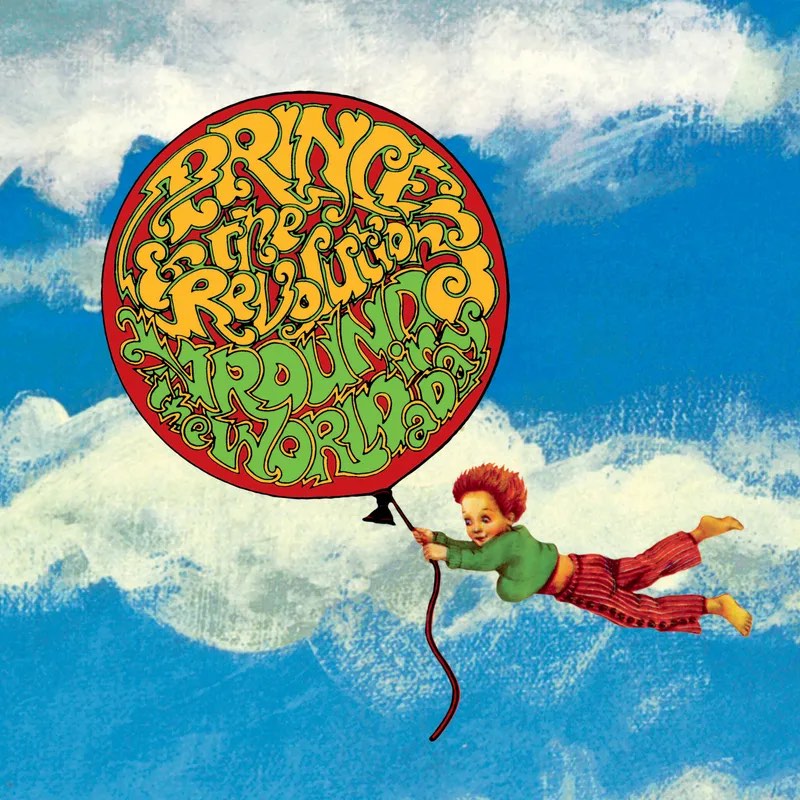On their third album since forming in 2019, Helsinki duo Pearly Drops take us on a cinematic voyage that tends to hew close to Diane Selwyn’s in Mulholland Drive. With a new set of production techniques and an expanded musical palette that leans into millennial-era new rave and acoustic rock, The Voices Are Coming Back channels Sandra Tervonen and Juuso Malin’s own experiences of visiting Los Angeles into narratives that align with David Lynch’s screenplay for his 2001 film. Even the incompleteness of these storylines—told through lyrics distorted by vocoders and buried under beds of electronic sound—mimic the late-great filmmaker’s penchant for giving us just a fraction of the story.
With the record out today, Tervonen and Malin were a bit more transparent than Lynch ever permitted himself to be about his art, taking us track-by-track through both the storyline and instrumental flourishes of The Voices Are Coming Back. From the disorientingly in-media-res opening scene to the mid-film “End Credits” and beyond to the self-described “psychedelic journey through this shifting space-time continuum” that closes the record out, their descriptions of these songs only reinforce that Pearly Drops’ sound is entirely their own. “As always, Pearly Drops’ indie disco most likely feels more tailor-made for the record bag of an imaginary DJ,” they share. “Think of a foggy, empty, and dirty club with a strobe light tearing through the dark—kind of eerie, kind of intense.”
Find their words, and stream along below (you can also purchase the record here via Music Website). Look at that—even their traditional portrait album cover channels the dread of Laura Dern’s distorted facial features approaching the camera in Inland Empire.
1. “Delusional on Sunset Blvd”
If this album were a movie, “Delusional on Sunset Blvd” would play like a chaotic opening scene, throwing the audience straight into the middle of the action. At first, the film might seem structurally unstable, since its characters already appear defeated, their arcs pushed past the point of no return. Yet the backdrop is unmistakable: Hollywood, with its palm-lined streets and vague shapes lurking in the alleyways, tension between surface glamour and the shadows lurking underneath. This was one of the very first songs we wrote for the album, and it also marks the first time we ever used an acoustic guitar. The record as a whole experiments with quite a few new production techniques, making it feel like a new step forward for us.
2. “Ratgirl”
“Ratgirl” drifts further down Talmadge Street, now submerged in a feverish and uncanny night. With full-on fantasy imagery and certain abruptness, “Ratgirl” is like the weirdest scene in a David Lynch movie. In both “Ratgirl” and “Mermaid,” the Hollywood fantasy isn’t just fading, it's sleepwalking toward collapse. Within this hallucination, becoming a rat crawling through the walls of a luxury Airbnb in Silver Lake feels less like a metaphor and more like a calling. In the realm of the real world, “Ratgirl” may be our first work that leans more toward dance music, fragmentarily attempting to recall the new rave and electroclash of the early millennium. As always, Pearly Drops’ indie disco most likely feels more tailor-made for the record bag of an imaginary DJ. Think of a foggy, empty, and dirty club with a strobe light tearing through the dark—kind of eerie, kind of intense. That’s the feeling we wanted to bring into its music video, as well.
3. “Mermaid” (feat. Cub Sport’s Tim Nelson)
“Mermaid” and “Ratgirl” are, in a way, a continuation of each other. In these songs, among other things, the glamorous Hollywood scenarios have already been turned upside down, the decline has begun—for example, a persona as a mermaid in the sewers of Sunset Boulevard seems like a more attractive sidequest. In real life, and somewhat connected to the album's theme, we met the Australian pop group Cub Sport in Los Angeles and by chance we ended up in Helsinki to work on music. Cub Sport's Tim [Nelson] felt a connection with the song “Mermaid,” which we were working on at the time and the ethereal opera of the final section was born in an instant. We were also attracted by the idea of wasting the opportunity of such a feat, meaning that the end result would be a feat without any interpretable words.
4. “Shallow”
Speaking in film metaphors again, “Shallow” would play out like a series of fragmented flashbacks scenes pieced together from both the promise of a dream and the emptiness it leaves behind. Its characters move through the tension between ambition and alienation, replaying moments from a life where identity and intimacy are already beginning to dissolve.
5. “End Credits”
“End Credits” is about being left behind in someone else’s story. It wanders through gardens and lawns, peers in through windows, sinks into moats, and whispers from the trunk of a car. A love letter buried in a dream—half memory, half hallucination. The figure in the song finds peace just in being there, even if trapped in that very trunk. We wrote it like the final scene of a film: the screen fades to black, and all that remains is the echo. This song carries the most consistent musical thread, a callback to the similar post-punk and ’80s new wave influences of our past albums, with The B-52's as the standout inspiration this time.
6. “Demonlover”
This track feels like the film’s cool, cinematic driving sequence, where time’s slipping away as you and your demonlover weave through the winding roads of the eastern Santa Monica Mountains. On the surface, it shimmers with beauty, but beneath that gloss runs something darker: a meditation on obsession, body image, and the demons that twist desire into destruction. The song closes with a playful outro, where we wanted to translate its original shoegaze-like state into a modular synth jam, layered with spoken word by Tatiana Bruening.
7. “Deep-fried”
“Deep-fried” captures the relentless intensity of “the land of the free" from a Nordic perspective. It characterizes the land of perpetual motion, over-the-top ambition, and nonstop pursuit of the next hit. Everything feels bigger, faster, and more extreme than anywhere else, yet beneath the surface lies a persistent numbness: the constant chase leaves you wondering if anything feels real at all. To us, this song is a satirical snapshot of this culture of excess.
8. “Pillow Face”
To us, “Pillow Face” feels like a quiet scream. This song lives in the tension between vanity and vanishing. It’s a looping lament about the dread of beauty, how we reshape ourselves to be seen, then disappear beneath the very image we create. A soft suffocation wrapped in rhythm, where the search for perfection becomes a silent spiral. With every repetition, the song asks: What happens when the beauty we craft to be noticed becomes the thing that drowns us? “Pillow Face” and “Ratgirl” are musical sequels of sorts. Both borrow from the new rave of the early millennium through a sort of ethereal Slowdive filter.
9. “Cocoon & Tatiana’s Lament”
“Cocoon & Tatiana’s Lament” hits like a sudden B-side ’80 horror scene: swampy, tense, and uncomfortably close. The song wants to drag you into the murky night, where the air is thick, the moon hangs low, and something monstrous stirs just beyond the trees. There’s no need to overthink the characters or the reason for this scene to happen; it’s pure tension and dread, a visceral horror moment that lingers in the shadows long after it ends.
10. “Silver Lake Mystery Forest”
When the hope is finally lost and a career in Los Angeles slips away, Silver Lake Mystery Forest becomes a portal leading back home. This song unfolds as a psychedelic journey through this shifting space-time continuum. On alternative albums of the ’90s and early 2000s, the final track often felt like an invitation to experiment, sometimes even including hidden songs. We’ve always found joy in that tradition, and this piece carries it forward.

